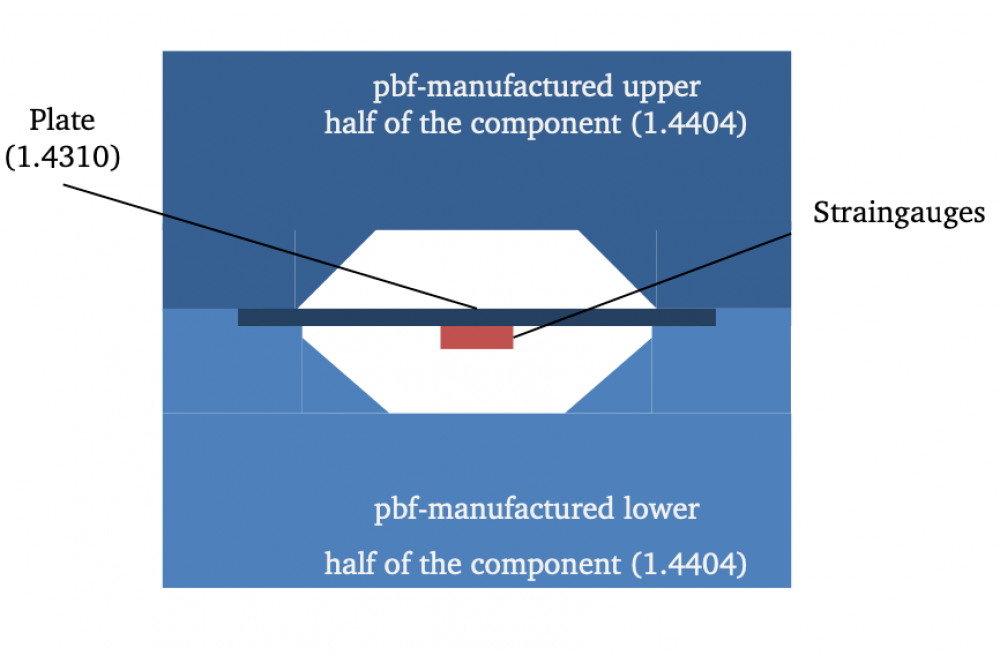AddKraft-Thermo
Einleitung
In numerous new fields of technology (including lightweight construction, medical technology) it is desirable to integrate force sensors directly into the loaded structure. The laser-based powder bed fusion process (short: LPBF), as an additive manufacturing process, could be a promising approach for the construction of structure-integrated force sensors.
Methoden
The force sensor is glued to the bottom of a conventionally manufactured plate which is embedded into the LPBF-manufactured component. To embed the plate, the LPBF process is interrupted after half of the component has been built. This work investigates the thermal load on the sensor during the LPBF process using a thermal FE simulation. The thermal simulation of the layer build-up starts after embedding the plate and simulates the heat input on the sensor, the plate and the component. Since a simulation of the LPBF process is very complex, different models with different accuracy and computational effort is investigated. One of these models was selected and successfully evaluated.
Ergebnisse
Based on preliminary tests it was shown that the temperature curves of the simulation results are qualitatively similar to those of the preliminary tests. In total, three different area coverages of the exposed layers on the plate were evaluated at three points (the position of the sensor and two corner points under the plate). Of the three points selected, the first point is used to investigate the maximum temperature reaching the sensor, which may be damaged on a certain threshold. The other two points were selected to gain a first impression of the temperature distribution. In addition, a limited growth function was calculated to estimate a global maximum after only four layers.
Diskussion
The developed model provides a broad basis for further investigations. The results still have to be validated with further experiments. Afterwards the model settings can be adjusted accordingly. In addition, other geometries can be thermally simulated. To investigate the thermal stresses, a further structural-mechanical simulation can also be started on the developed simulation model. Thereby the thermal stresses can be determined.




